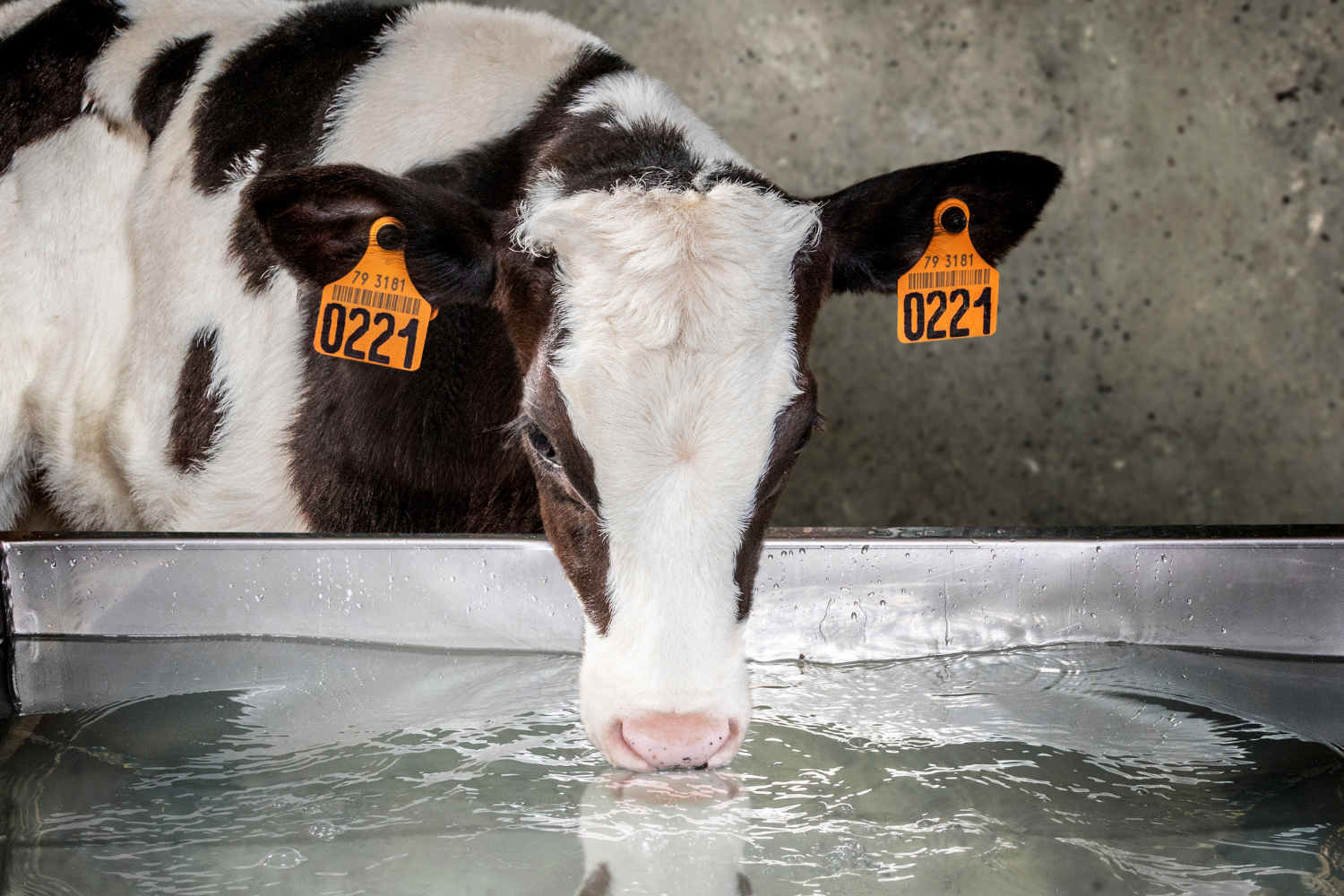Provide easy access to water points
Ensure there are enough water points available to all cows, offering high-quality water. Since cattle are suction drinkers, they prefer to drink water from an open surface. However, the water quality is at risk due to the large open water reserves. Feces from cattle, birds, and rodents, along with litter, dust, and leftover food, can easily contaminate drinking troughs. Large trough troughs should therefore be cleaned regularly, especially in warm temperatures, to counteract harmful biofilm or algae formation.
To meet the hydration needs of the herd, ensure at least one open trough, 120 cm wide, is available per 20 cows. Alternatively, install two quick drinkers capable of delivering 20 liters of water per minute each. Hang the drinkers at a height of 60 cm and maintain a water depth of at least 7 cm to allow the cows to easily reach and drink enough water.
Cows should never have to walk more than 20 meters to reach water. Placing shade structures near water points can encourage cows to drink more frequently, as they will be more comfortable and less stressed by the heat. A high-performance cow that produces around 40 liters of milk per day needs three to four liters of water to produce one liter of milk in hot weather.


